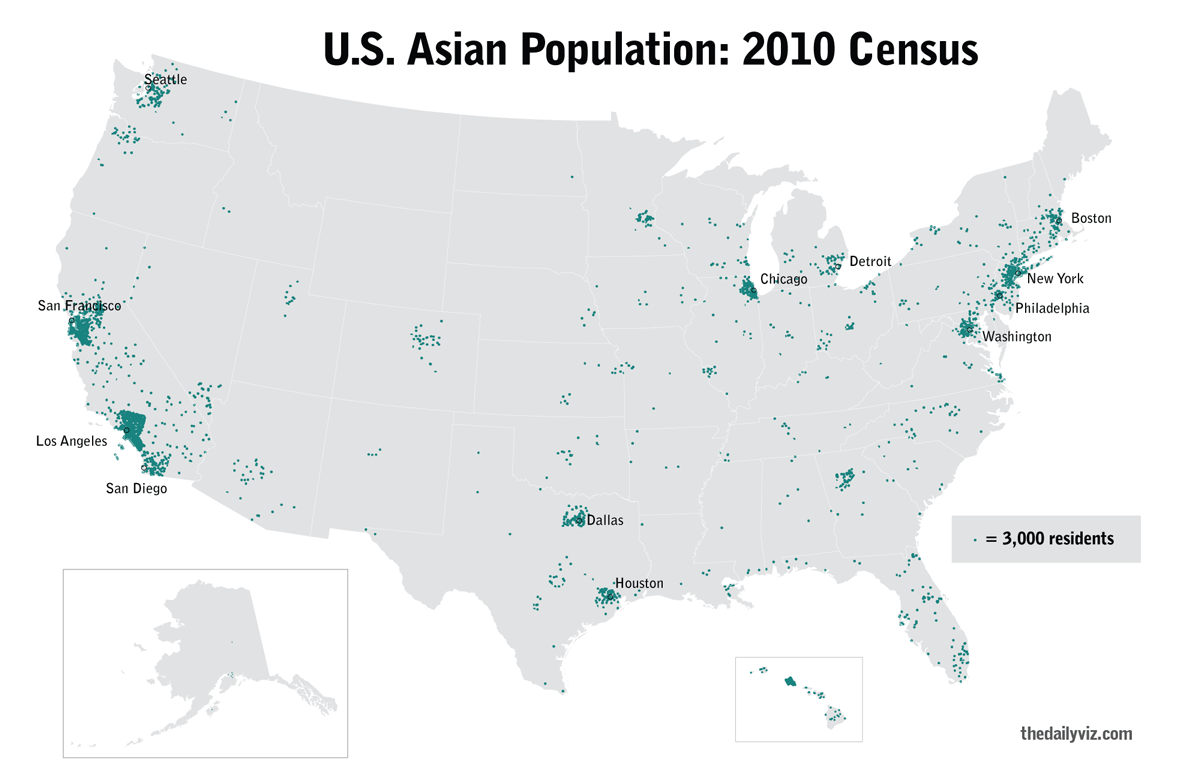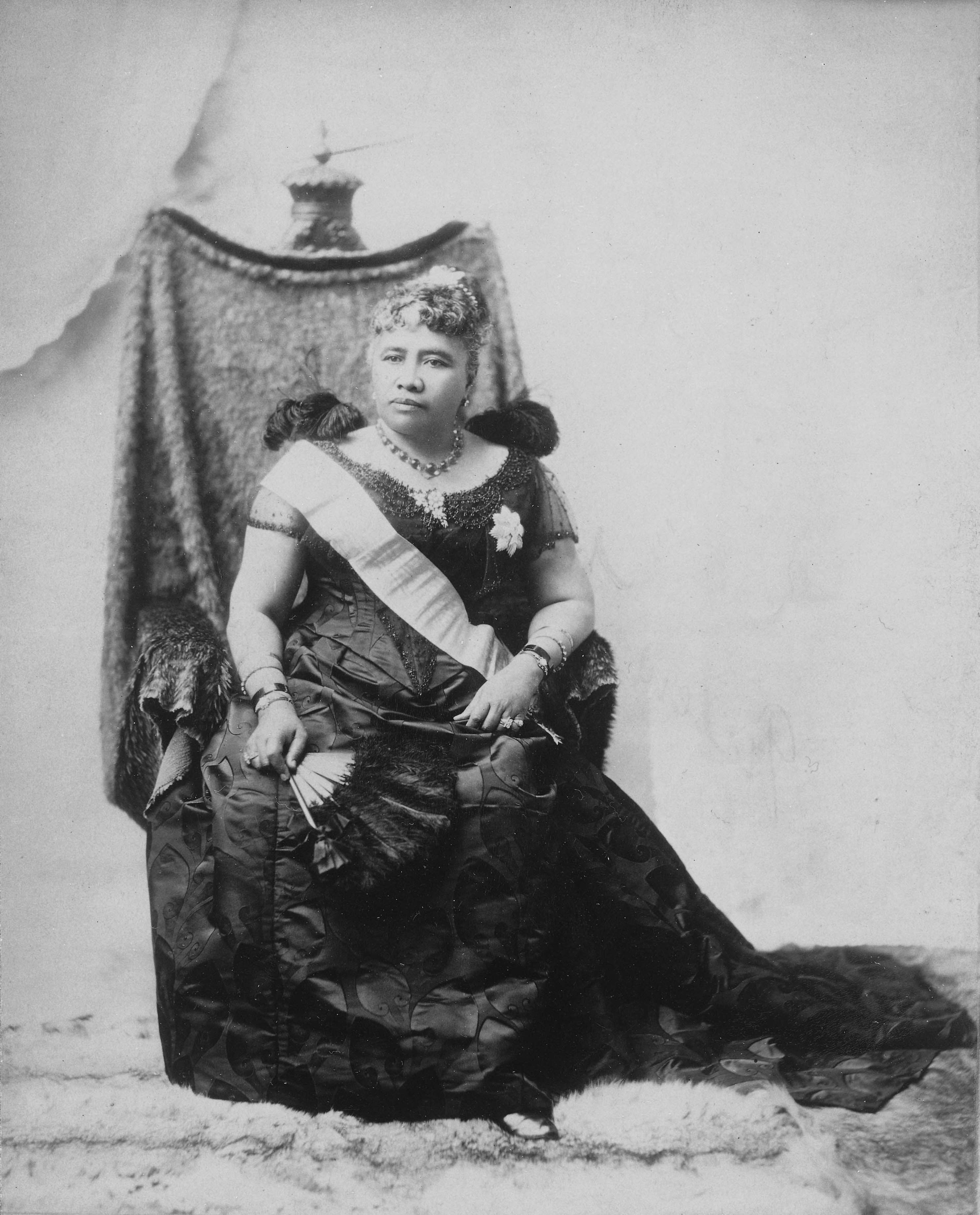May is the month to recognize the experiences and contributions of Americans of Asian or Pacific Islander heritage. Originally established as a heritage week in 1978, it was upgraded to a month in 1990. According to the Library of Congress' Asia Pacific Heritage Month website, "May was chosen to commemorate the immigration of the first Japanese to the United States on May 7, 1843, and to mark the anniversary of the completion of the transcontinental railroad on May 10, 1869. The majority of the workers who laid the tracks were Chinese immigrants."
 |
| Each green dot on the map above represents 3000 Asian Americans. By United States Census [CC BY-SA 1.0 (http://creativecommons.org/licenses/by-sa/1.0)], via Wikimedia Commons. |
Chronology of Asian/Pacific American History with Relevant Library Resources
1849 - California Gold Rush encouraged large numbers of Chinese to immigrate to US.
Riches for all: the California Gold Rush and the World ed. by Kenneth N. Owens.
Gold Mountain Dreams (video available through Films on Demand database).
1869 - Transcontinental Railroad completed, many of the workers were Chinese immigrants.
A Great & Shining Road: the Epic Story of the Transcontinental Railroad by John Hoyt Williams
1882 - Chinese Exclusion Act severely limited Chinese immigration to the US.
At America's Gates: Chinese Immigration During the Exclusion Era, 1882-1943 by Erica Lee
1885 - A mob of white miners massacred approximately 28 Chinese people in Rock Springs, Wyoming.
"When Coal Miners Burned: The Rock Springs Massacre" in Wild West by Eric Niderost and Luc Nettleton.
1885 - A mob of white miners massacred approximately 28 Chinese people in Rock Springs, Wyoming.
"When Coal Miners Burned: The Rock Springs Massacre" in Wild West by Eric Niderost and Luc Nettleton.
1887 - A white gang massacred over thirty Chinese gold miners along the Snake River Canyon in Oregon.
1898 - Spain ceded control of Guam and the Philippines to the US.
Guam and its People: a Study of Culture Change and Colonial Education by Laura Thompson.
A War of Frontier and Empire: the Philippine-American War, 1899-1902 by David J. Silbey
1898 - US annexed Hawaii.
The Betrayal of Liliuokalani, last Queen of Hawaii, 1838-1917 by Helena G. Allen.
 |
| Queen Liliuokalani in 1891. James J. Williams [Public domain], via Wikimedia Commons. |
1899 - US gained control of American Samoa (eastern half of the Samoan archipelago). Learn more about American Samoa here.
1910 - Angel Island Immigration Station created in San Francisco Bay.
Angel Island: gateway to Gold Mountain by Russell Freedman.
Angel Island: A Story of Chinese Immigration (video available through Films on Demand database).
1924 - Immigration Act severely limited immigrants from most Asian countries. Read more about the Act here.
1940 - Angel Island Immigration Station closed.
1942 - President Roosevelt issued Executive Order 9066, which authorized the confinement of Japanese-Americans into internment camps.
Looking like the enemy: My Story of Imprisonment in Japanese American Internment Camps by Mary Matsuda Gruenewald.
1943 - Chinese Exclusion Act was repealed.
1944 - US gained control of Northern Mariana Islands. Learn more about the Northern Mariana Islands here.
1946 - The Philippines gained independence from the US.
Faith, family, and Filipino American community life by Stephen M. Cherry.
1957 - Dalip Singh Saund, of California, became the first Asian American to serve in the US Congress.
1959 - Hiram Fong, of Hawaii, became the first Asian American to serve in the US Senate.
1965 - Immigration Act ended racial quotas, which increased immigration from Asian countries. Read more about the Act here.
Korean Americans (video available through Films on Demand database).
The American dream in Vietnamese by Nhi T. Lieu.
Suburban Sahibs: Three Immigrant Families and Their Passage From India to America by Mitra S. Kalita.
1973 - George Ariyoshi, of Hawaii, became the first Asian American governor of a US state.
1973 - George Ariyoshi, of Hawaii, became the first Asian American governor of a US state.
1988 - Civil Liberties Act granted reparations to Japanese-Americans who had been interned during World War II. Read full text of the act here.
2000 - Norman Mineta became the first Asian American to serve on the US Cabinet.
2000 - Norman Mineta became the first Asian American to serve on the US Cabinet.
The Dick Smith Library has a large collection of resources relevant to the Asian-American and Pacific Islander-American experience. Let us know if we can help you find some information on the topic via email at reference@tarleton.edu or phone at 254-968-9249.

No comments:
Post a Comment